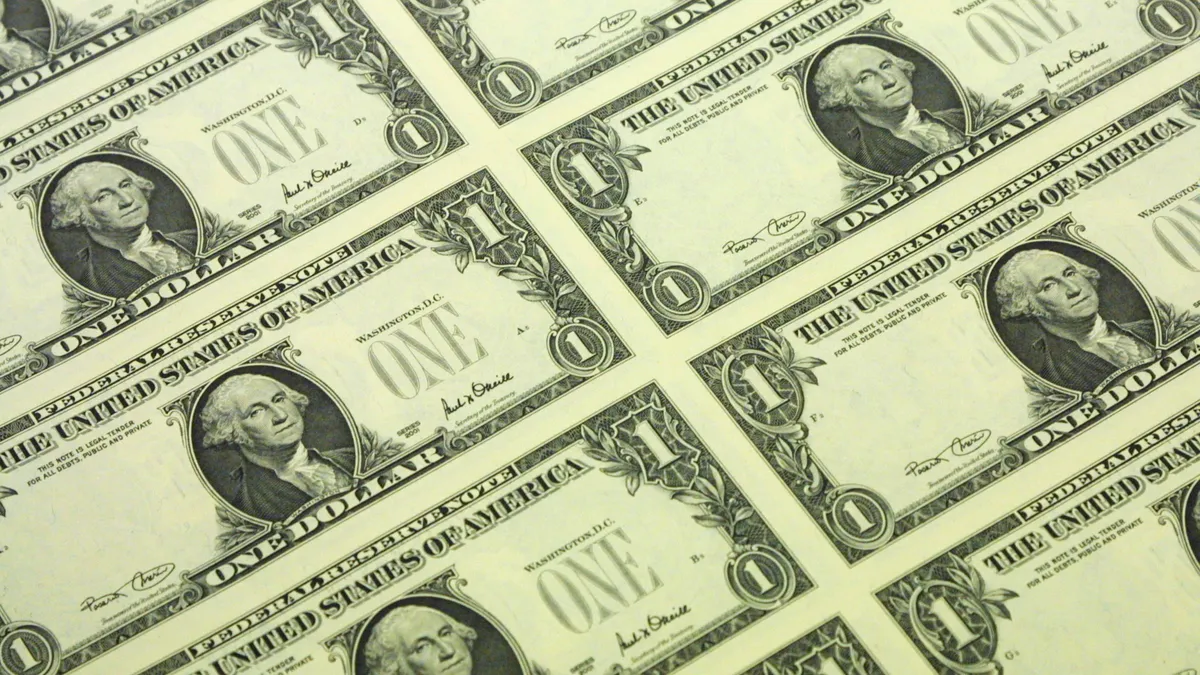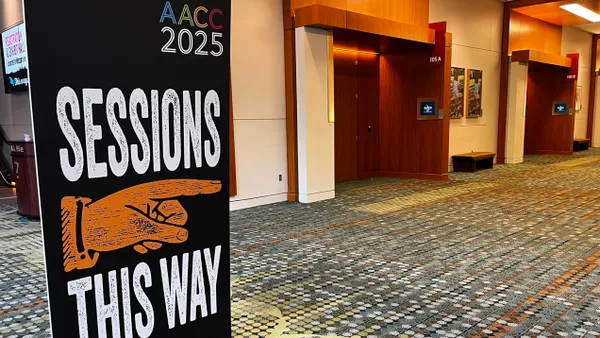Dive Brief:
-
Virginia's system for funding colleges is "irrational, inequitable, and unjust," often sending fewer state dollars to institutions with many low-income students and overinvesting in some private schools with poor student outcomes, a new report argues.
-
The analysis from think tank Education Reform Now, which focuses on educational equity, asserts that the state's funding model should be revamped. It said more money should be put into higher education, as nationally Virginia lags in state appropriations.
-
A "more rational and equity-minded approach" would direct money to institutions with greater shares of disadvantaged students, according to the organization.
Dive Insight:
The report highlights problems that have long plagued colleges but the pandemic brought into focus, including anemic state higher ed funding and whether public financial aid programs efficiently target students who most need them.
Too often, schools that receive large amounts of state money serve tiny portions of low-income students, the report states.
Its authors call out William & Mary, which is the fifth-highest funded four-year public school in Virginia but enrolls the smallest share of low-income students in the state. William & Mary received nearly $8,500 in state money per full-time equivalent student as of 2019, but fewer than 12% of its students were federal Pell Grant recipients, based on a three-year average. And the Virginia Military Institute, which receives a little more than $8,000 in state funding per FTE, only 14% of students were Pell Grant recipients.
Conversely, at George Mason University, with a little more than $4,450 per FTE, Pell Grant recipients make up slightly less than 30% of the student body.
"Virginia’s two- and four-year colleges need equitable funding; that is higher funding for those with higher needs, and a formula that guarantees it," the report states.
The analysis also notes that the state investment in higher ed has fallen.
To make up for shrinking state funding, public colleges nationwide typically raise tuition and fees, the report states. In 2001, Virginia students paid about a quarter of the costs for college, with the state covering the remainder. But as of 2019, that shifted to students and the state paying about half of the costs each.
States can blunt the effects of disinvestment by boosting aid for certain students, the report states. But it found Virginia's aid programs, particularly one for students at private colleges, are flawed.
The Virginia Tuition Assistance Grant, or VTAG, Program helps undergraduate and graduate students attending private, four-year nonprofit schools in the state. Virginia spent $71 million on it in 2020.
VTAG doesn't take into account students' academic performance or financial need, meaning anyone can apply. The effect is that millions of taxpayer dollars benefit students who do not need financial assistance, according to the analysis. Nearly 60% of VTAG recipients came from households earning $50,000 and above in 2018-19.
This funding also goes to some private schools with middling student outcomes. The top beneficiary of the program, the evangelical Liberty University, took in $16.7 million in VTAG money in 2019, despite its six-year graduation rate being under 50% that year.
Reevaluating state funding will become all the more important as the U.S. battles the economic downturn of the pandemic. Higher ed had historically low state support headed into the recession, according to research from the State Higher Education Executive Officers Association. Early estimates indicate money for public colleges is expected to fall in most states in fiscal year 2021.
Virginia's legislature has set aside $300,000 for the State Council of Higher Education for Virginia to study college funding. It is due to deliver a report to the governor and lawmakers by Dec. 1.















